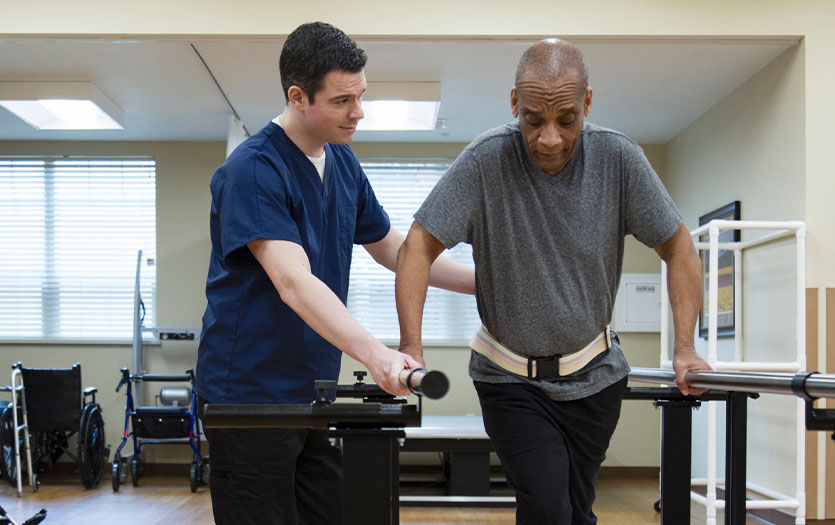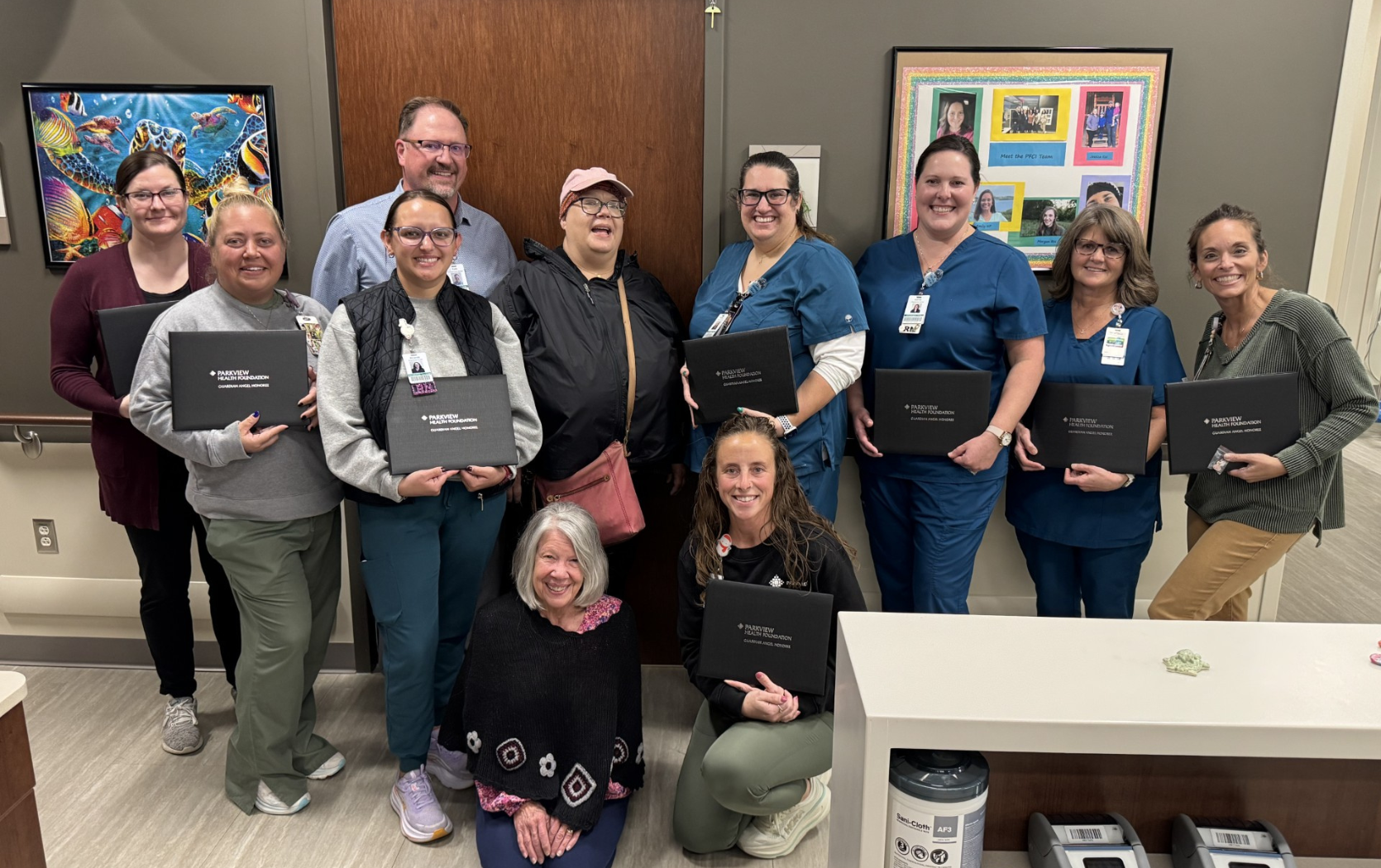
Did you know that in the United States someone has a stroke every 40 seconds? Not only is stroke the fourth leading cause of death—after heart disease, cancer and chronic respiratory disease—but it’s also the leading cause of disability. After a person has a stroke, treatment shifts to preventing a future stroke and recovery. Stroke rehabilitation is important to help stroke patients recover and learn ways to adapt to changes caused by the stroke.
What is a stroke?
A stroke is damage to the brain that happens when a blood vessel in the brain is blocked or bursts. Without blood and the oxygen it carries, part of the brain starts to die. Then the part of the body controlled by that area of the brain can't work properly.
Brain damage can start within minutes of a stroke. But quick treatment can help limit brain damage and increase the chance of a full recovery. Learn about the importance of BEFAST here.
What is stroke rehabilitation?
Stroke rehabilitation is training and therapy that helps a person recover, prevent problems, regain function and learn new ways of doing daily activities after a stroke. The focus of your rehab will depend on how the stroke has affected your ability to do the things you want and need to do.
How does stroke rehab help you get better after a stroke?
The goal of stroke rehab is to help you recover, prevent problems, and regain skills you may have lost or to make the most of your remaining abilities.
Stroke rehab can help you to:
- Do as well as you can and be as independent as possible.
- Learn to live with the changes to your brain and body caused by the stroke.
- Adjust to living within your home, family, and community.
- Help prevent problems like falls or a blood clot in a vein (deep vein thrombosis).
In stroke rehab, a team of health professionals works with you to regain skills you lost as the result of a stroke. Your rehab will be based on how the stroke affected you. It also is based on your general health and your ability to participate. Generally, rehab starts with helping you resume daily activities. This includes eating, bathing and dressing.
Then, you may learn how to use assistive devices or orthotics. These are tools that help you hold objects, open and close things, transfer weight while shifting positions or walk. These tools may be hard to get used to, but they help you return to your daily life and everyday tasks.
A key part of rehab also is taking steps to prevent a future stroke. To stay in good health, you may need to take medicines and make some lifestyle changes. Work with your rehab team to decide what type of exercise, diet, or other lifestyle choices are best for you.
Who is on your stroke rehab team?
A team of health professionals will work with you and your caregivers to help you recover from a stroke. Your rehab team may include doctors and nurses who specialize in stroke rehab as well as other specialists including:
- A physical therapist
- An occupational therapist
- A speech-language pathologist
- A recreational therapist
- A psychologist or counselor
- Other health professionals, such as a dietitian and a vocational counselor
A social worker or case manager may help you and your caregivers arrange for the help and equipment you may need at home.
How long does stroke rehab take?
The length of time you’ll be in a stroke rehab program varies depending on what type of help you need and how the stroke affected you. Rehab starts while you are still in the hospital and may continue at a rehab center or after you return home.
Some people recover the most in the first few weeks or months after their stroke. But sometimes people continue getting better for years. So even if recovery is happening slowly and with a lot of time and hard work, don’t give up hope.
Learn about the expert stroke care provided in Parkview’s inpatient rehabilitation center here.
Copyrighted material adapted with permission from Healthwise, Incorporated. This information does not replace the advice of a doctor.



